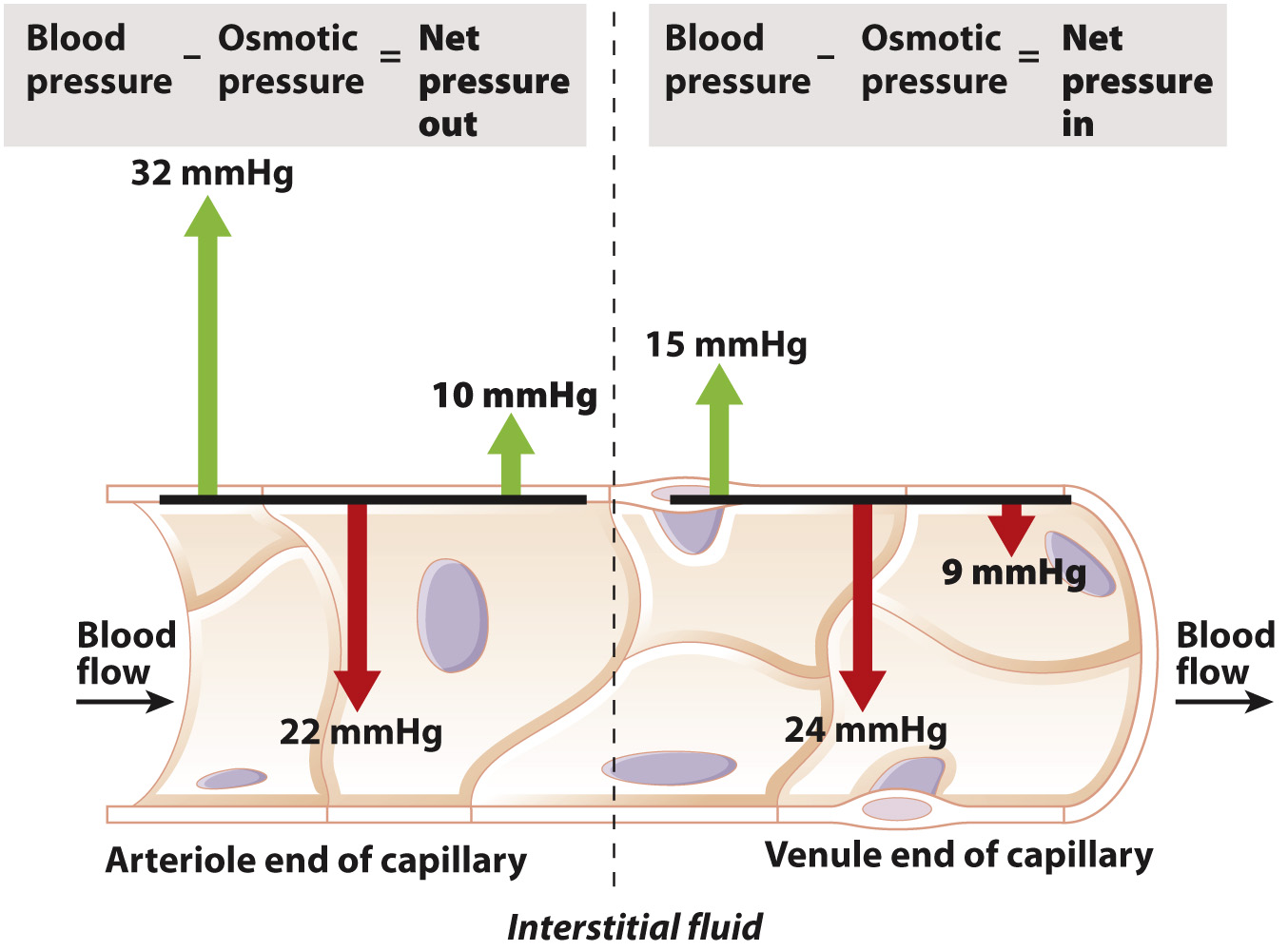Compounds and fluid move across capillary walls by diffusion, filtration, and osmosis.
We have seen that O2 and CO2 move between capillaries and tissues by diffusion. In addition, water, certain ions, and other small molecules, but not proteins and blood cells, move from capillaries into the surrounding interstitial fluid (the extracellular fluid surrounding vessels) forced by blood pressure. The blood is thus filtered as it passes through the capillary wall.
Why doesn’t the blood plasma lose all its water and ions over time? As water is filtered out of the capillaries, some ions, cells, proteins, and other large compounds remain inside, increasing in concentration (Fig. 39.19). As a result, there is a tendency of water to flow back into the capillaries by osmosis (Chapter 5). At the same time, blood pressure decreases because of the flow resistance imposed by the capillaries. When the pressure is no longer high enough to counter osmosis, water moves back into the capillaries.

In vertebrates, excess interstitial fluid is also returned to the bloodstream by means of the lymphatic system, a network of vessels distributed throughout the body. The fluid that enters the lymphatic system is called lymph. Small lymphatic vessels merge with progressively larger thin-